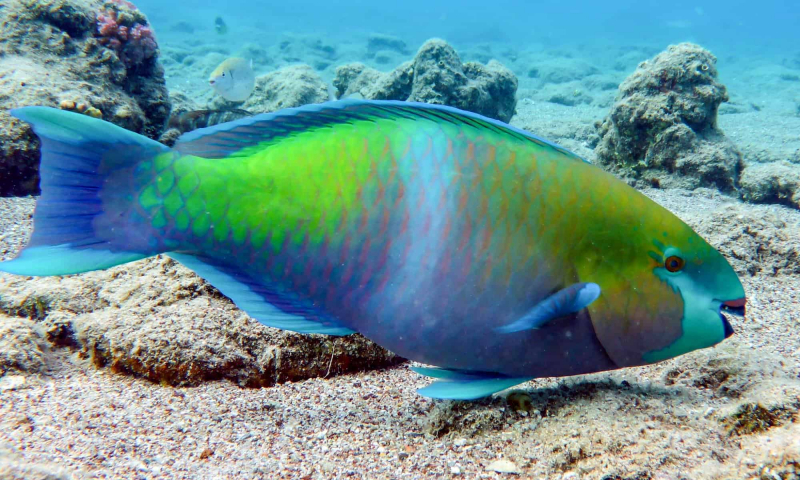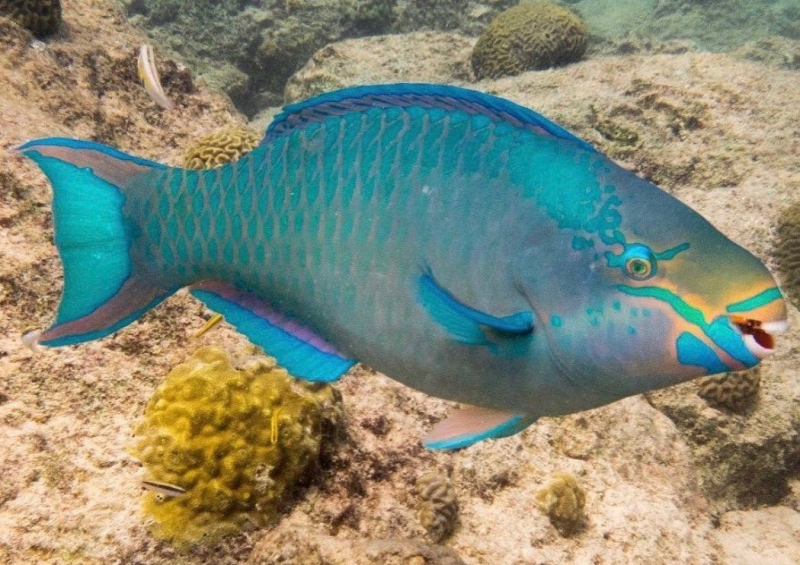Parrotfish
About 90 different fish species are together referred to as parrotfishes, which is a family (Scaridae) or subfamily (Scarinae) of the wrasses. The Indo-Pacific region has the highest species richness for this group, with roughly 95 species. They can have a big impact on bioerosion and can be found in seagrass beds, rocky beaches, and coral reefs. The dentition of parrotfish, which is unique from that of other fish, including other labrids, gives them their name. With their parrot-like beaks, they rasp algae from coral and other rocky substrates. Their many teeth are arranged in a closely packed mosaic on the exterior surface of their jaw bones.
Parrotfish are found in several tropical and subtropical oceanic locations, although the Indo-Pacific is home to the majority of the most stunning species. Because they consume particular species of algae and other pests that could otherwise wipe out these priceless ecosystems, they are crucial to the sustainability of coral reefs. Rockier coastlines are home to parrotfish.
Within the family, maximum sizes range, with the majority of species growing to a length of 30 to 50 cm. A few species can grow to lengths of more than 1 m, and the green humphead parrotfish can grow to 1.3 m in length. The bluelip parrotfish, which can grow to a maximum size of 13 cm, is the smallest species.










